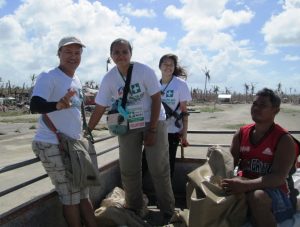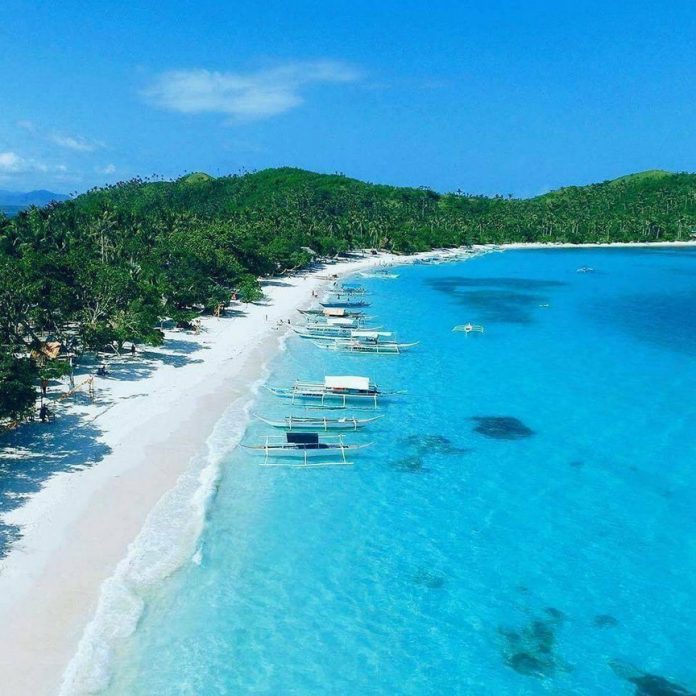It was almost dark, on November 23, 2013, when we first arrived in Guiuan, Eastern Samar, two weeks after Super Typhoon Yolanda (Haiyan) first landed in that small town. The typhoon damaged more than 90% of the structures, leaving thousands homeless and destitute. I was part of a team of volunteers seeking to provide psychosocial support to the grieving and traumatized survivors in Samar and Leyte.
The following day, after our outreach activity at a village beside the airport, then a busy entry point of aircrafts bringing relief goods and services from many countries, I met some foreigners of Russian descent. I happened to talk to some of them after few awkward “hellos”. I was curious because they did not belong to any particular relief organization, except for the simple fact that their parents once lived in a nearby island of Tubabao shortly after the Second World War. One said that is was payback time—for the people of Guiuan.
It was only when I was back in Davao City after more than a week of volunteer work that I discovered about that forgotten tale of Filipino hospitality. Guiuan was to become a beacon of hope and the Philippines became respected around the world as a hospitable and caring refuge for people fleeing from all sorts of persecution.

After the Bolshevik Revolution, Russians supporting the deposed czar began fleeing the country. There were the so-called White Russians, in contrast to the red Soviets. One big group fled to Shanghai, China and stayed there for several years before fleeing again, afraid of the inevitable Maoist victory in China. One flamboyant former czarist military officer, Col. Gregory Bologoff, organized and headed the Russian Emigrants’ Association. Bologoff made an appeal to the international community to take them in, through the International Refugee Organization (the predecessor of the current United Nations High Commissioner for Refugees). Not a single country responded. Most were busy with their own post-WWII reconstruction, except for the Philippines, our one small country in Asia, then barely independent and also busy reconstructing.
Then president Elpidio Quirino declared: “We, the Philippines, will accept these people.”
And so began the odyssey of nearly 6,000 White Russians to a remote, small island of Tubabao across Guiuan in Eastern Samar. The White Russians were not a monolithic block. Yes, they were Russian speaking, culturally Russian, but they come from various nationalities. There were the Ukrainians, Estonians, Latvians, Jews, gypsies, Tatars from Crimea, Armenians. Georgians, Czechs, Poles and Hungarians, among others. It was later dubbed as “Tiempo Russo” (Time of the Russians).
Despite the bare, naked life in the island, the refugees found comfort both from among themselves and from the local people of Guiuan. Some were falling sick. Some were falling in love. They built their own schools for kids, dorms, water supply and even a church. Some Filipinos from the mainland Guiuan often visited the refugee camp and learned from them. Eventually, the people of Guiuan were among the first Filipinos to learn ballet and piano, thanks to Russian musicians living in the island. When Quirino visited the island, he ordered the fences of the camp to be taken down. It sent a very heartwarming and strong message to the White Russians that they were not living in a camp.
Eventually, in early 1950s, they gradually left the island and settled in various countries, notably Argentina, Paraguay, Sto. Domingo, Belgium, Germany, France, Australia and, lately, the US.

One survivor, Larissa Constantinova Krassovksy, now living in California, US, had this to say: “When you’re young, you don’t think of the rest of your life. You just live. Everything is beautiful…sunshine, moonlight…. But as you grow older, and you begin to reminisce about your life. And that deed that the Philippine government did, it changed everybody’s life. That’s my feeling towards the Philippines—forever grateful….”
The Tiempo Russo was not the only time in our history as people when we welcomed those who sought refuge. During World War 2, at the time when US and other rich countries were very restrictive with their immigration laws, the Philippines accepted around 1,500 Jews fleeing the Holocaust in Nazi Germany. During the Spanish Civil War in 1936, around 200 Spaniards fled to the Philippines. Hundreds of Vietnamese boat people came to our shores in late 1970s until the 1980s. We now even offer safe haven to the Rohingya Muslims persecuted by the Buddhist government of Myanmar. The Philippine Immigration Act of 1940 preceded even international landmark conventions adopted in 1951 and 1954.
Last year, the Department of Tourism launched the “Bring Home a Friend to the Philippines.” It is marketing program designed to showcase our people’s hospitality, warmth and caring nature, eventually luring tourists to come to the Philippines. I have said in many occasions that, arguably, the Philippines’ biggest tourism asset is not its beaches, falls, caves and mountains, but its own people. We are generally friendly; we speak decent English. I suggest another tourism slogan: “Philippines: Asia’s friendliest”.







